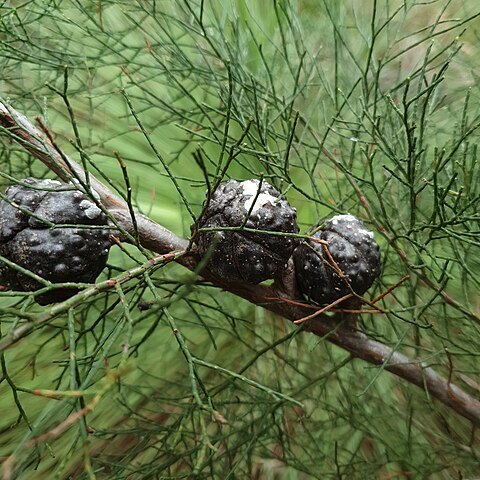Tree or shrub to 20 m tall, rarely multi-stemmed. Branches spreading to erect. Leaves 2-4 mm long on ultimate branchlets, grey-green or glaucous; dorsal surface rounded. Male cones cylindrical, clustered, to 5 mm long. Female cones solitary or grouped on stout, apically expanded, often clustered fruiting branchlets, ovoid to depressed-globular, 25-35 mm diam., persistent and holding seeds for several years after maturity; cone scales 6, thick, densely coarsely tuberculate, occasionally with a very small dorsal point below the apex, not separating near base, not spreading widely after opening; alternate scales reduced; larger scales apically abruptly obtuse; columella usually thick, entire, 3-angled, 2-4 mm high. Seeds numerous, dark brown; wings 2 or 3, c. 4 mm wide.


